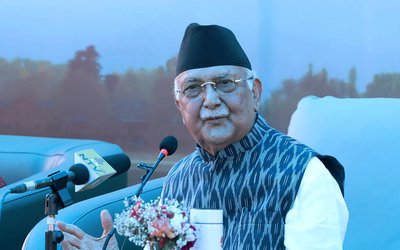More on News





Our own experience seems to tell us that in the dead of winter we seem to be more prone to catching a cold. Many of us may think that catching a cold is synonymous with suffering from influenza virus. But in reality the most common “cold” virus in adults is the rhinovirus. Both the influenza virus and the rhinovirus are transmitted by coughing and sneezing through droplet infection. We can inhale these droplets or we can infect ourselves and others through our hands. For the rhinovirus there is no effective vaccination available, but for influenza virus there is.
The effectiveness of the influenza vaccine in preventing influenza among healthy adults depends on the match between the vaccine and the circulating strains of influenza virus that year. That is the reason why the vaccine is different from year to year keeping in mind the different circulating strains of the virus against which the annual vaccine has to be targeted. This year’s influenza vaccine also incorporates last year’s H1NI ( swine flu ) vaccine. When the match between the vaccine and the circulating strains is close, the vaccine is 70 % effective. Amazingly even when the match is poor, vaccination has been shown to reduce the number of deaths from influenza. One study even showed that vaccination of children and adolescents protected unvaccinated residents from the same community probably due to what is known as “herd” immunity effect.
The Advisory Committee for Immunization Practice ( ACIP) from the USA suggests that everyone over six months should be vaccinated with the influenza vaccine including pregnant women. Last year when there was an outbreak of H1N1, pregnant women were especially vulnerable in terms of catching swine flu and dying from it. But in resource poor countries like Nepal, how relevant is this recommendation to vaccinate everyone?
There is no question there are more important vaccines than the influenza vaccine for countries like Nepal, for example the diphtheria or the tetanus vaccines. But there are indeed vulnerable groups in Nepal that could benefit from the influenza vaccine. People with COPD ( chronic obstructive lung disease) commonly populate the outpatients clinics and wards of many hospitals in Nepal especially during the winter months when many factors, including increased pollution lead to exacerbation of their lung disease. This COPD group of patients may benefit from influenza vaccine because of the already existing compromised lung function in this group of patients. An influenza infection on top of their COPD could push them over the edge, so to speak. (By the same token, the COPD patients could also in addition use a pneumococcal vaccine to prevent pneumococcal pneumonia that needs to be given only once unlike the yearly influenza vaccine). Unfortunately, both these vaccines ( the pneumococcal and the influenza vaccine) are not cheap and are not always readily available. Furthermore with frequent electricity cuts, how sure can the patient be that the cold chain for the vaccines was maintained? These are important and common problems that are constantly faced in resource poor settings like ours that need to be dealt with at the government public health level.







